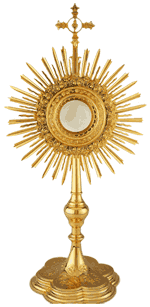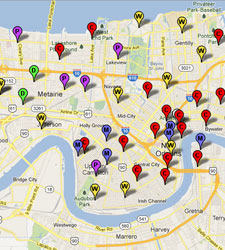John the Baptist saw Jesus coming toward him and said, “Behold, the Lamb of God, who takes away the sin of the world. He is the one of whom I said, A man is coming after me who ranks ahead of me because he existed before me.”
(Jn. 2:1-5)
One of the mysterious things about the Scriptures is how it has a powerful way of speaking to the past, present and future at the same time. But there’s an easy explanation for that. Sacred Scripture is the Word of God, and Jesus Christ, the Word made Flesh (Jn 1), is the same, today, yesterday and forever (Heb. 13:8).
There are few scriptural lines that are more easily understood as speaking to the past, the present and the future than the line we hear from John the Baptist this weekend: “Behold, the Lamb of God.” The “past” pointed to by this statement is the Passover Lamb of the Book of Exodus. It was the lamb that was slain by the Jewish people and whose blood was put on their doorposts and lintels so that the angel of death would “pass over” them while it killed the first-born of the Egyptians. This was the final plague that persuaded the Pharaoh to release the Jewish people from their slavery. It has a perpetual commemoration in the Feast of Passover celebrated by Jewish people today. However, something is missing. There is no longer the sacrifice of a lamb because the Temple (where animal sacrifices were done) has been destroyed. The unleavened bread is there, but no lamb.
The future pointed to by the “Behold, the Lamb of God” is the lamb of Revelations 4-7. It is the lamb “who is in the center of the throne [and who] will shepherd them and lead them to springs of life-giving water.” It’s the form of a prophecy that has not yet occurred. Or has it?
And what about the present? Where is the Lamb of God today? At Mass we paraphrase John’s line immediately before receiving the Eucharist. After we begin using the new translations of the Mass in December, 2011, we will return to something more closely resembling the original. Instead of saying “This is the Lamb of God who takes away the sins of the world, happy are those who are called to his supper,” we’ll be saying “Behold the Lamb of God, behold him who takes away the sins of the world. Blessed are those called to the supper of the Lamb.”
In a way, this new line – used in our present day – is a connector of the past and the future. Like the Jewish passover, the Eucharist is a reminder of the events of the past. And like the Jewish passover, it points to a deliverance in the future. But for us, the unleavened bread is really the Christ, the Lamb of God. He has come; He will come again; but He has also promised to be with us always. Behold Him who is present in the Holy Sacrifice of the Mass.
Rev. Msgr. Christopher H. Nalty
msgr.nalty@gmail.com




